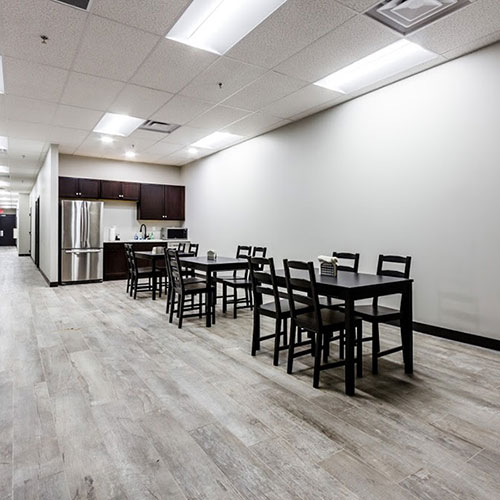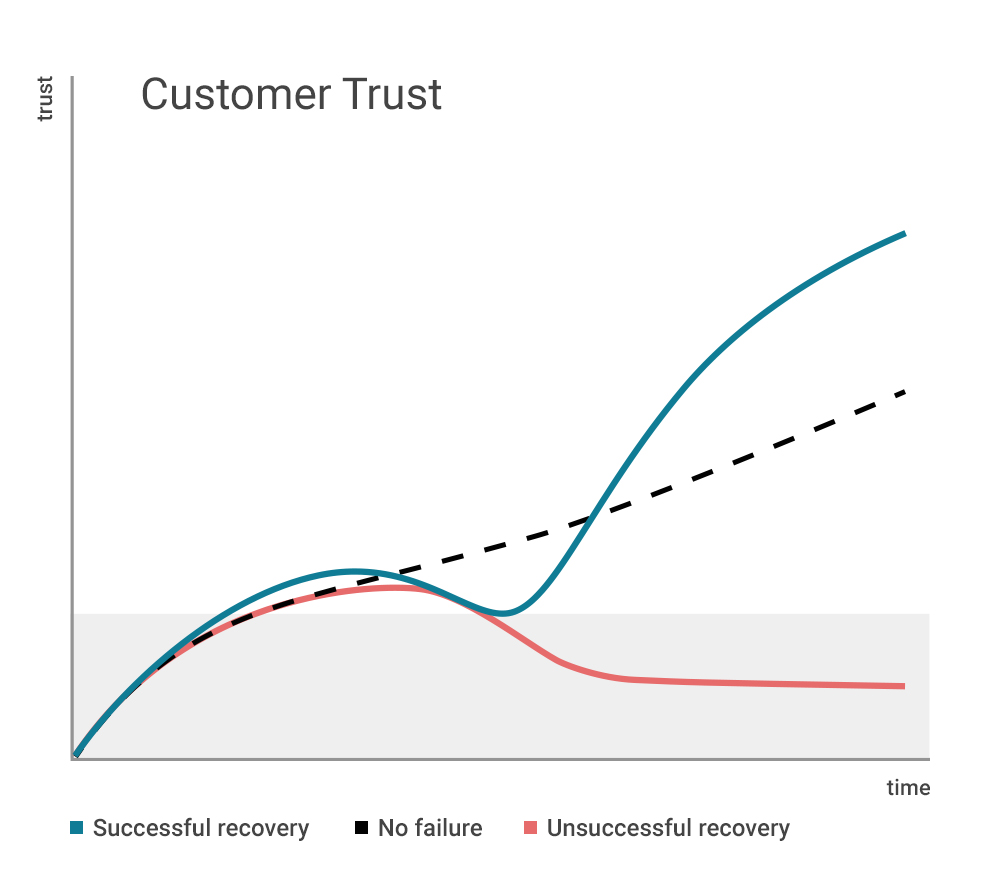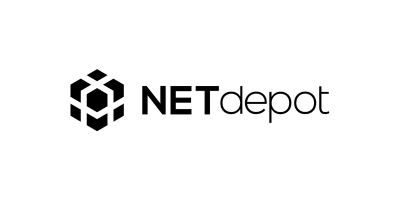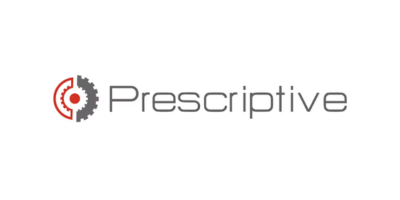THE IMPORTANCE
Protection for Unforeseen Disruption
In today’s digital age, where uptime is paramount, businesses must be prepared to handle unforeseen disruptions. Whether it’s a natural disaster, cyberattack, or hardware failure, having a robust disaster recovery (DR) and business continuity (BC) strategy is essential. This is where we thrive, delivering secure and reliable colocation services to ensure your business remains operational, no matter what challenges arise.

Our Facilities
Relocate key personnel
We have dedicated offices, common spaces and conference amenities, as well as more dynamic hoteling offices that can be used throughout a DR protocol to relocate key operational staff. This means the employees who need to be right in the heart of the situation to work with the data can directly manage and tap into the resources immediately at their fingertips.
Our Location
A Strategic Advantage
Our strategic location means that if a plug gets pulled at your primary site, you’ll instantaneously be back up and running. With low-latency connectivity to the primary data center linking us, we can be synced for data continuity. Our location makes us a safe enough distance from all major threats that could render your primary site useless. At the same time, close enough to offer unrivaled speed in getting back online. The question is, when you report to your CEO about the downtime, would you prefer to state that you were down for a millisecond, 45 minutes, days or longer?

Tailored
Disaster Recovery Solutions
From half racks to large private cages, we provide scalable colocation services for your long-term disaster recovery needs. Not to mention, 14+ onsite carriers and network service providers offering shared, dedicated and multi-carrier blended internet access ranging from 100Mbps to 100Gbps. All our colocation services are backed by a right size guarantee that ensure you get exactly what you need today and in the future.
Implications
Have you considered the impact of an IT disaster on your organization?
You’ll realise that you can’t afford to lose high value data or be down for longer than your business can handle. Knowing this, a secondary data center to ensure you don’t lose even seconds may be a necessity. For a reliable data continuity service, our data center is fully fault tolerant with 100% uptime since inception. Meaning you can trust your disaster recovery solution to always work when it’s colocated with us.
How To
Create a Disaster Recovery Strategy
The very first part of creating an effective disaster recovery plan is to define what the needs and expectations of your organisation are. By this, we have to understand the core business risk posed by an outage.
- Are lives at risk because your system is offline?
- What level of outage can your infrastructure withstand?
- How much revenue is lost?
Ensuring these questions are answered is how to create a strategy that meets your organisation’s needs. However, the needs of an organisation, from a purely functional standpoint, are often separate from what is expected. These expectations are defined by company leadership and the people who use the service.
When deciding on your company’s business continuity plan, if the expectations are higher than the needs and there is an outage, you have a personal credibility risk but not a core business risk. This can often lead to an unwanted desire to change how the IT department works, forcing additional spending and a constant state of change. If the expectations are lower than the needs, you potentially have leadership that won’t want to pay for their actual needs to be met.
Again, there is a personal credibility risk here, in addition to a real business risk. If there is an outage and you have failed to create a disaster recovery plan that covers your core business needs, there could be serious damage caused.
Outages are inevitable, what would you like the credibility of your IT department to be post outage?

In many ways, disaster recovery can fall within business continuity. Business continuity is about retaining the full functioning of the business throughout disasters, there is a large scope to this strategy. Utilizing a synchronous dark fiber connection, our data center can provide an instantaneous switchover from a primary site in Houston, meaning that business operations remain functional.
When an organization gets hit by downtime after a disaster, disaster recovery is how they get back to operations and normal IT infrastructure. Alongside the data, this means they also need to get access back to software, hardware, networking equipment, connectivity and power. Unfortunately, often the causes of losing access to these resources in the first place will also render the facilities where those resources are sourced unusable, meaning a secondary datacenter is needed to ensure data safety. There are two main forms of disaster recovery services: one based in the Cloud, where all your data is backed up within cloud servers; the other form is having your data backed up at a secondary site in a far off location. Both of these approaches are classed as Cold Site and can take days to initiate a complete recovery.
This strategy provides continuity of data, but not operations. Expect to be down until your primary site is recovered, but rest assured that you will have your latest snapshot of backup data. If there has been damage to a primary data source and a loss of data, worst case scenario is that a full restore from the axillary site has to be initiated. Often with secondary sites, the thought process is that distance = safety. However, what must be factored in is the time it takes to return the lost data to where it needs to be. It takes a long time to move data, both from the cloud or another city. Even in this day and age, the fastest way to transport all the information for large organizations is by the truckload. Companies actually deliver their data on the back of a truck because it’s the fastest solution, that isn’t limited by bandwidth to download with.
Disaster Recovery Partners
Onsite Disaster Recovery Specialists
FAQs
Yes, we offer a fully managed colocation service called Colo+, which includes all the essential hardware such as PDUs, rack and stack, cabling, labeling, and ongoing support. Both our standard and managed colocation services come with complimentary 24/7 remote hands-on support to ensure your infrastructure is operational even when you cannot get to the data center.
Absolutely. We strongly recommend implementing a blended internet solution or maintaining both a primary and backup internet connection to ensure seamless disaster recovery and business continuity (DRBC). TRG Datacenters provides free cross-connects, which can save you hundreds, or even thousands, of dollars each month compared to our competitors.
Yes, we offer dedicated office spaces for clients who need to house their Network Operations Center (NOC) teams and other essential personnel. Additionally, we provide access to common areas that include a fully stocked kitchen, conference room amenities, showers, and Wi-Fi, ensuring a comfortable and convenient working environment.
While we don’t directly create disaster recovery plans, we work closely with a network of trusted partners who specialize in this area. We can connect you with Managed Service Providers (MSPs) and other experts who can assist in developing a comprehensive disaster recovery and business continuity plan tailored to your needs. You can view our full list of recommended partners on our website.
No, we focus on providing top-tier colocation services for clients with physical hardware, such as servers, storage devices, and networking equipment, that they wish to host in our data center. However, we fully support cloud DRaaS and hybrid IT strategies by offering direct connections to all major cloud service providers, enabling seamless integration with your cloud-based disaster recovery solutions.










